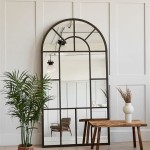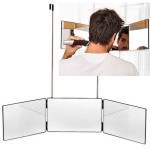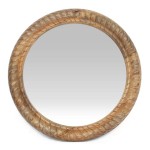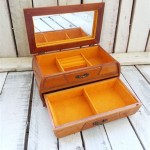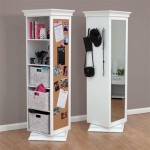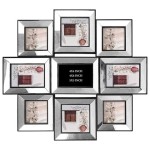Mirror Tiles for Bathroom Walls
Mirror tiles offer a versatile and impactful design element for bathroom walls. Their reflective qualities can enhance the perception of space, amplify natural light, and create a stylish, modern aesthetic. This article explores the various aspects of using mirror tiles in bathroom renovations or new builds, from material selection to installation techniques and maintenance.
Types of Mirror Tiles
Several types of mirror tiles are available, each with its unique characteristics and suitability for bathroom environments. Traditional glass mirror tiles offer a classic look and excellent reflectivity. These are available in various sizes and shapes, including square, rectangular, and specialty designs. Acrylic mirror tiles provide a lighter, shatter-resistant alternative, ideal for areas prone to impacts or where safety is a priority. They are generally less expensive than glass but may scratch more easily. Specialty mirrored tiles, like those with antiqued or tinted finishes, offer design flexibility for achieving specific aesthetic goals.
Choosing the Right Mirror Tile
Selecting the appropriate mirror tile involves considering several factors. The desired aesthetic plays a significant role; larger tiles create a seamless, modern look, while smaller tiles or mosaic patterns offer a more intricate and decorative appearance. The bathroom's size and layout should also influence the choice. In smaller bathrooms, strategically placed mirror tiles can create an illusion of spaciousness. The existing bathroom décor and color scheme should harmonize with the chosen tile style. Budgetary constraints should also be considered, as prices vary significantly based on material, size, and finish.
Preparing for Installation
Proper surface preparation is crucial for successful mirror tile installation. The wall surface must be clean, dry, and level. Any existing wallpaper or loose paint should be removed, and imperfections filled and sanded smooth. A moisture-resistant substrate, such as cement backer board or waterproof drywall, is recommended, especially in shower or tub areas. Precise measurements of the wall area are essential for determining the required number of tiles and planning the layout.
Installation Methods
Mirror tiles can be installed using various adhesives, including mirror mastic, construction adhesive, or thin-set mortar. Mirror mastic is specifically designed for adhering mirrors to walls and offers excellent bonding strength. Construction adhesive provides a versatile option for various substrates. Thin-set mortar is a more traditional method, especially for larger tiles, offering a strong and durable bond. Regardless of the chosen adhesive, applying it evenly and according to the manufacturer's instructions is critical for a secure and long-lasting installation. Spacers are recommended to ensure uniform grout lines, if applicable. Some tiles may come with self-adhesive backing, simplifying the process, though careful alignment is still essential.
Grouting and Sealing
Grouting is typically not required for mirror tiles installed edge-to-edge, but it may be necessary for installations with spaced tiles, depending on the desired aesthetic. Unsanded grout is generally recommended to avoid scratching the mirrored surface during application. After the grout has dried, a sealant can be applied to protect the grout from moisture and staining. Care should be taken to avoid getting sealant on the mirrored surfaces.
Maintenance and Cleaning
Maintaining the pristine appearance of mirror tiles requires regular cleaning. A standard glass cleaner or a mixture of water and vinegar is typically sufficient for removing water spots, fingerprints, and other common bathroom residues. Abrasive cleaners or those containing harsh chemicals should be avoided, as they can damage the mirrored surface. A soft cloth or squeegee is the best tool for cleaning, preventing streaks and scratches. Promptly addressing any spills or splatters can help prevent staining and etching, particularly in hard water areas.
Safety Considerations
Safety should always be a priority when working with mirror tiles. Appropriate eye protection and gloves should be worn during cutting and installation. Care should be taken when handling glass tiles to avoid breakage and potential injury. When installing heavier tiles, ensure adequate support during the curing process to prevent slippage or detachment. In areas prone to impact, such as low walls or areas near children, consider using tempered glass or acrylic mirror tiles for added safety.

75 Mirror Tile Bathroom Ideas You Ll Love December 2024 Houzz

Mirrored Tiles Mirrorworld

Mirror Bevelled Wall Tiles Bathroom Kitchen Splashback Bevel Edge Glass

Antique Mirror Tiles Backsplash Müller Designs

9 Mirror Tiles 16 6 X 17 Antique

Night Shade Medici Co

Merola Tile Re Beveled Antique Mirror 3 In X 6 Glass Wall 10 4 Sq Ft Case Wsdlsbam The Home Depot

Paris Gray Beveled 4x12 Antique Mirror Subway Wall Tile Accent Bathroom Tiles Design

Mirror On The Wall

Mirrored Rectangle Wall Tiles Pack Bathroom Tile Glass Antique Mirror


